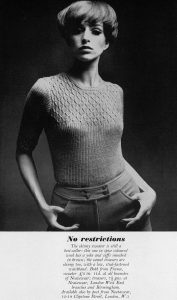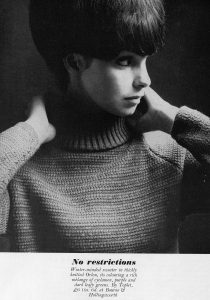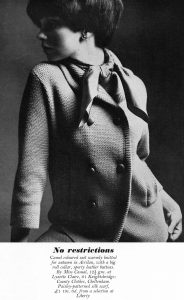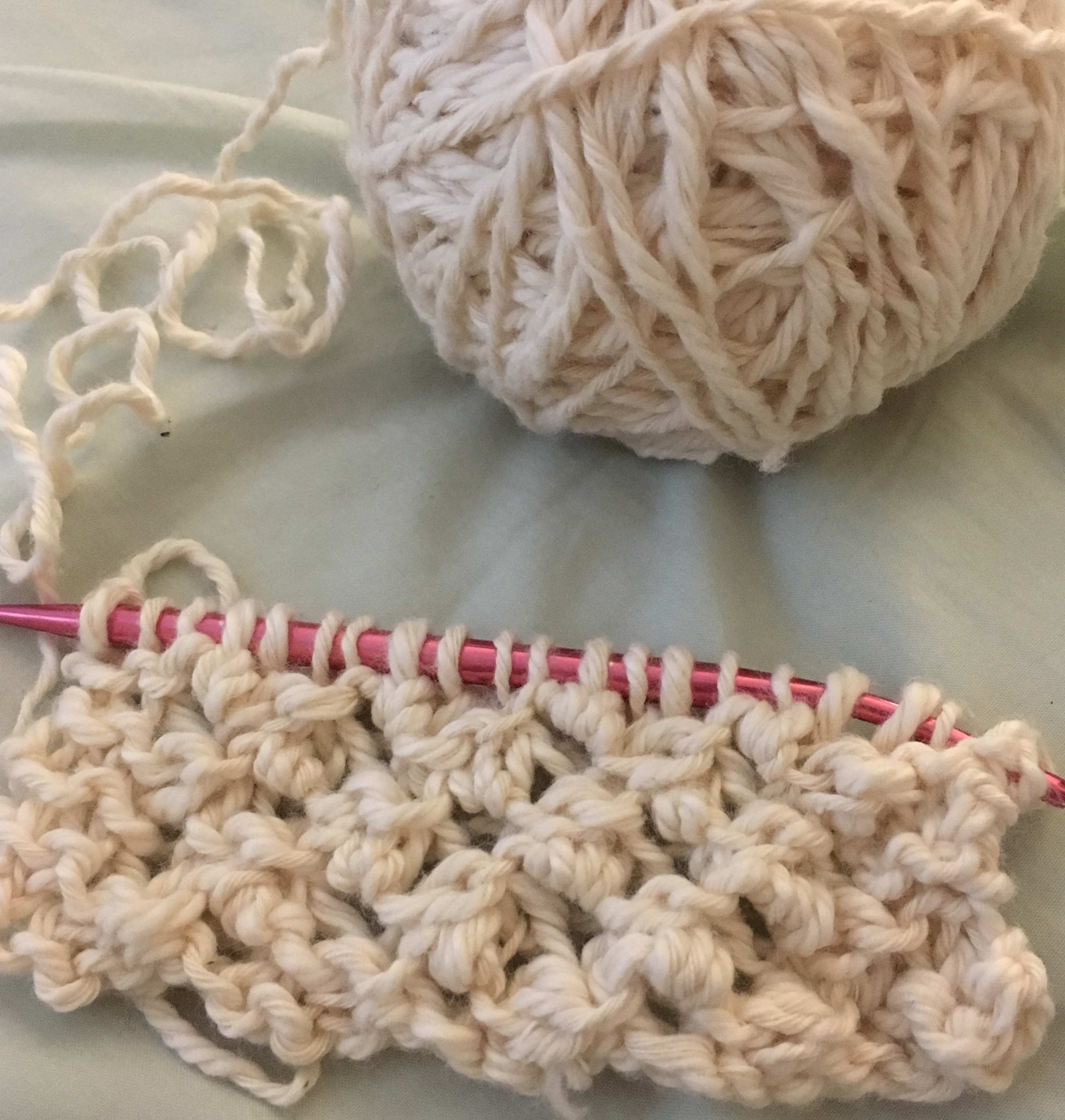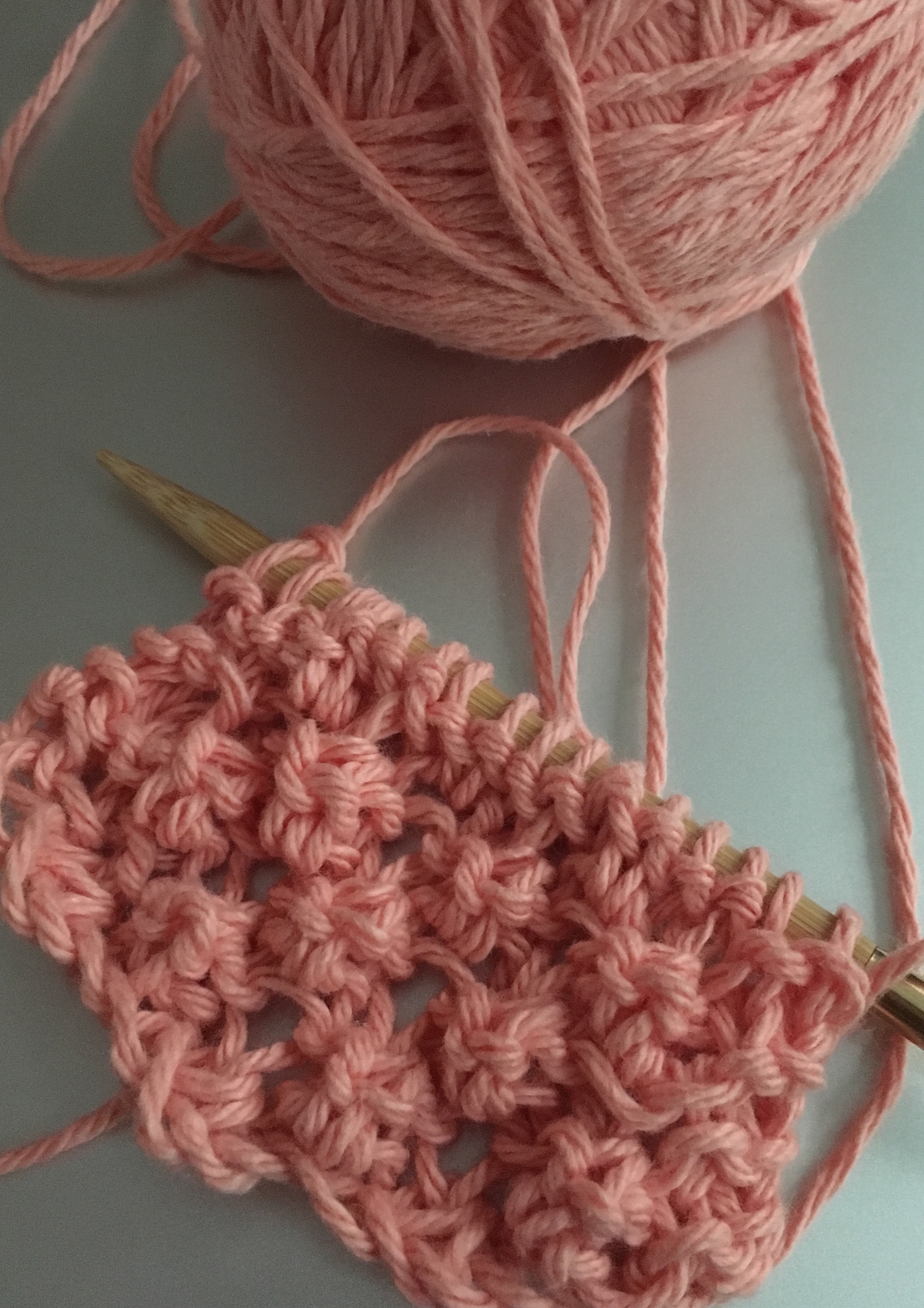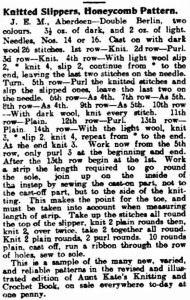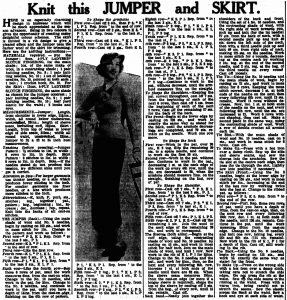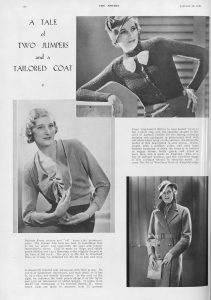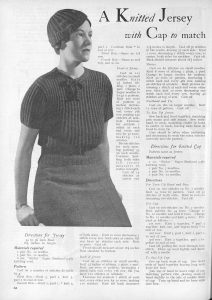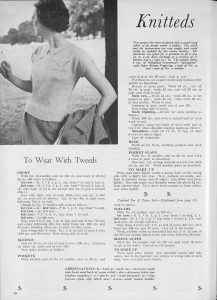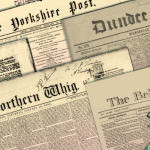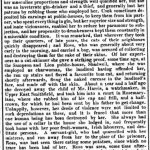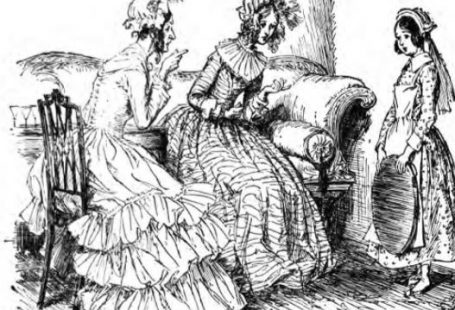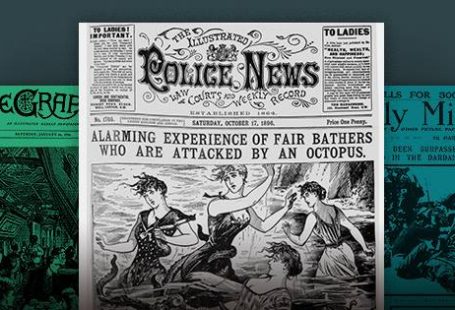As autumn gets truly underway, the warm clothes come out and the knitting needles start clacking.
Knitting has a long tradition. This versatile skill could be utilised at anytime — and often was. Printed in the Illustrated War News in 1914, a group of women were photographed knitting in a wine cellar during bombardments in Rheims.

Womanly sympathy with the soldiers is taking the practical form on the Continent, and in our own country, of knitting “comforts” for them, but the needles are wielded “with a difference”. Our photograph shows a big, gloomy cellar in Rheims, dimly candle-lit, a refuge from shell-fire in the wrecked and frequently bombarded city. In London, the thousands of women engaged in similar work are able to carry it out in pleasant rooms, not invested with gloom by fear of ruthless invasion. But the knitters of Rheims have this in common with more fortunate workers–sympathy with those who have fought and suffered for them or are still fighting, in surroundings of unspeakable wretchedness and unceasing peril.
As you break out your needles, it’s a great time to remember that, as noted in 1940, ‘Practical knitted clothes are becoming smarter and smarter now that we have to wear them more than we used to, in place of more frivolous outfits suited to grayer and more leisured days. The newest idea is to have knitted clothes with a decorative look so that she can feel “dressed up” yet “ready for anything” at any hour of day. Some styles are even woven through with tinsel threads. Others are likely to be trimmed with beads—particularly if they are knitted from angora wools.’

As we’ve found in our Cookery Corner research, recipes were often vague as to measurements and procedure; the same can be said of knitting patterns printed in the newspapers: vagueness and imprecise language are common culprits in these vintage patterns, leaving much room for interpretation!
This sparseness can be seen in the following pattern.

This pattern, aside from its sparseness, highlights another difficulty of these vintage patterns: confusing terminology that in modern parlance would be expressed differently. In the above example, every other row is written as ‘plain’, which means a knitted row. In the modern iteration of this pattern, every other row is purled, not knitted.
Confusion in deciphering patterns can be alleviated when images are included in the pattern or final design.


An image can be particularly useful for unusual designs, such as this baby boy’s hat.

You can find patterns for all sorts of designs and clothing in the newspapers.
But if your tastes tend toward knitting-related humour as opposed to knitting patterns, The Sketch has you covered there:



